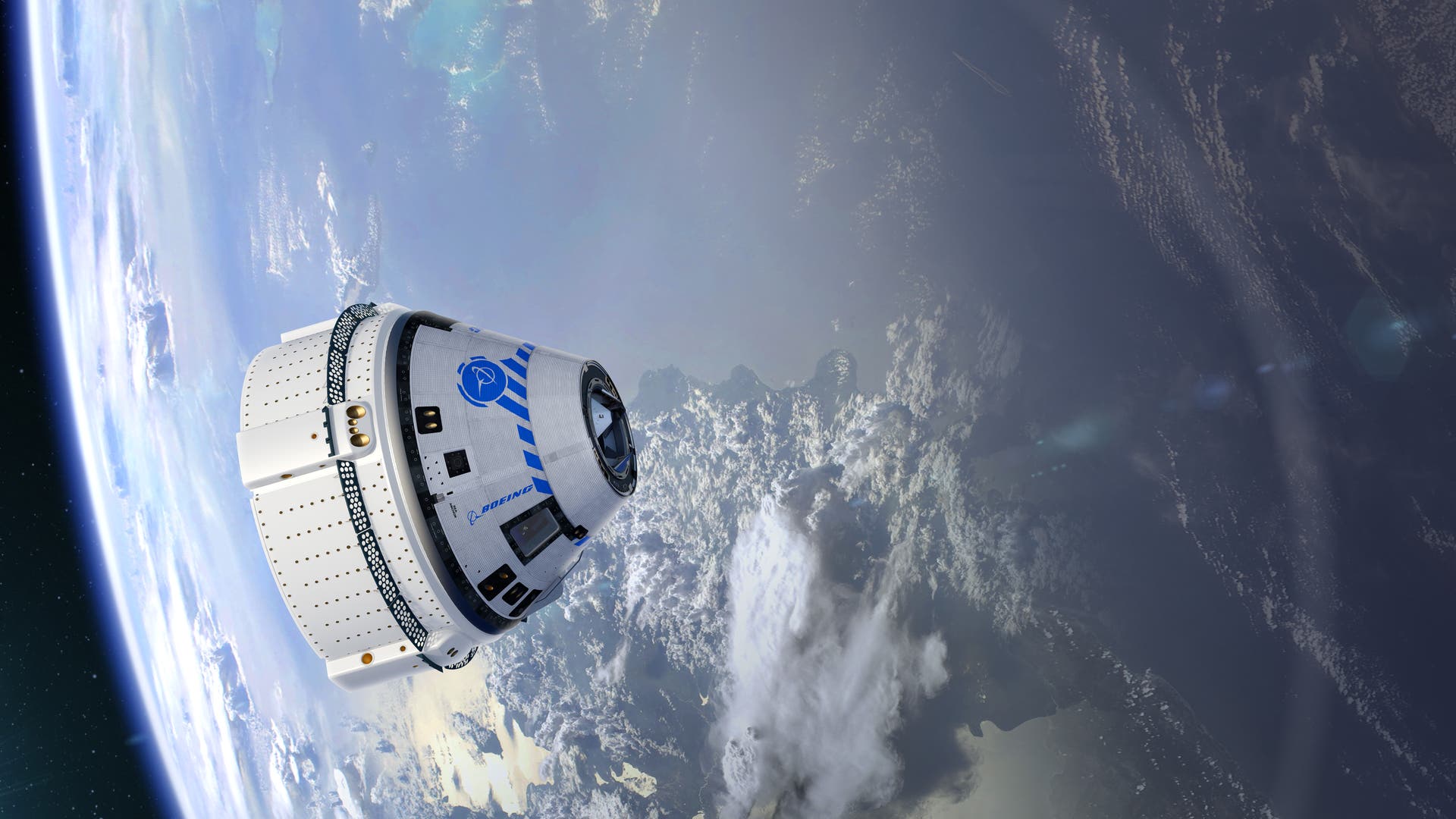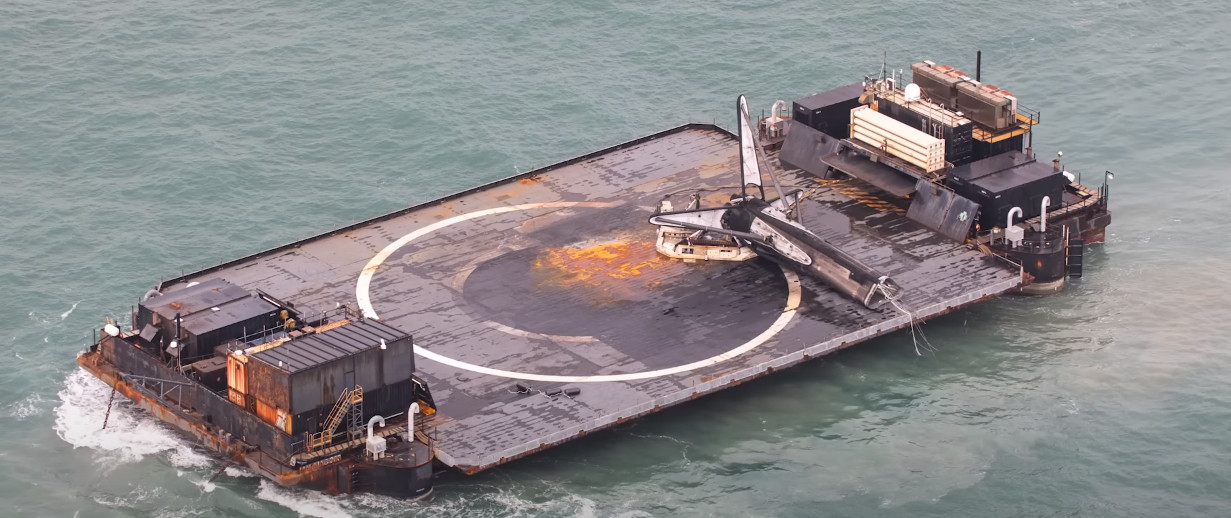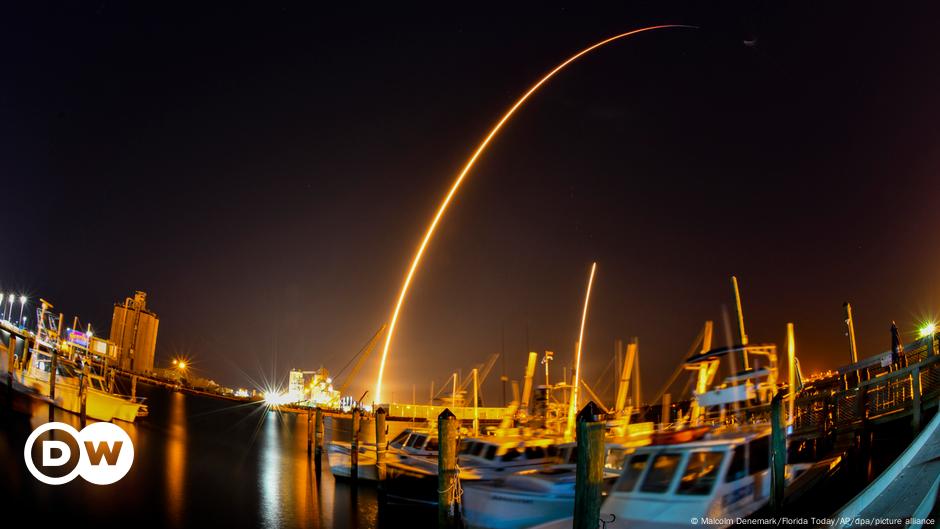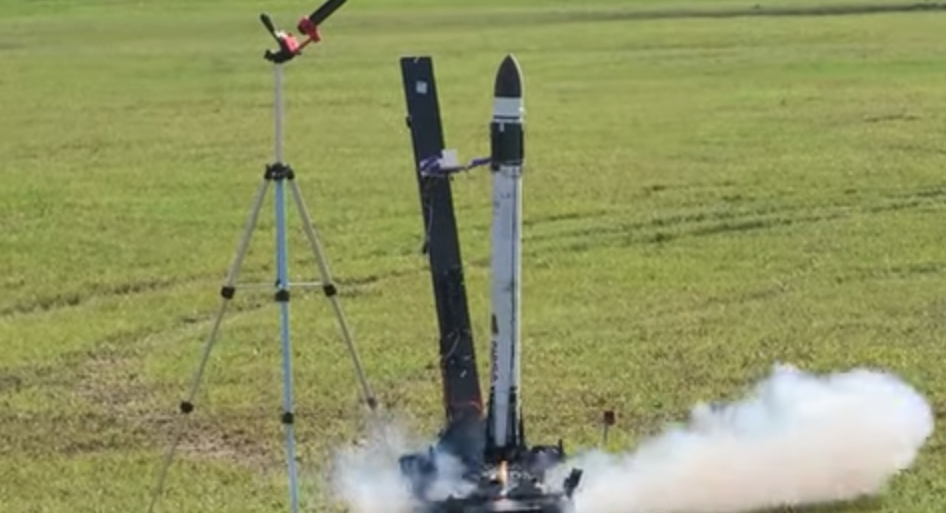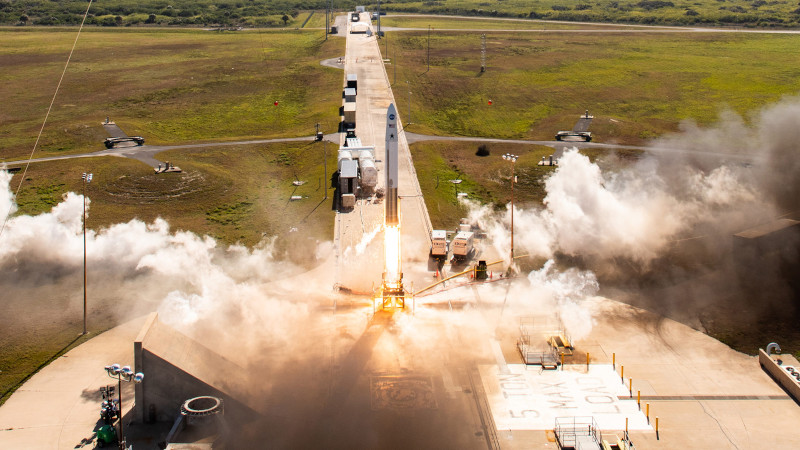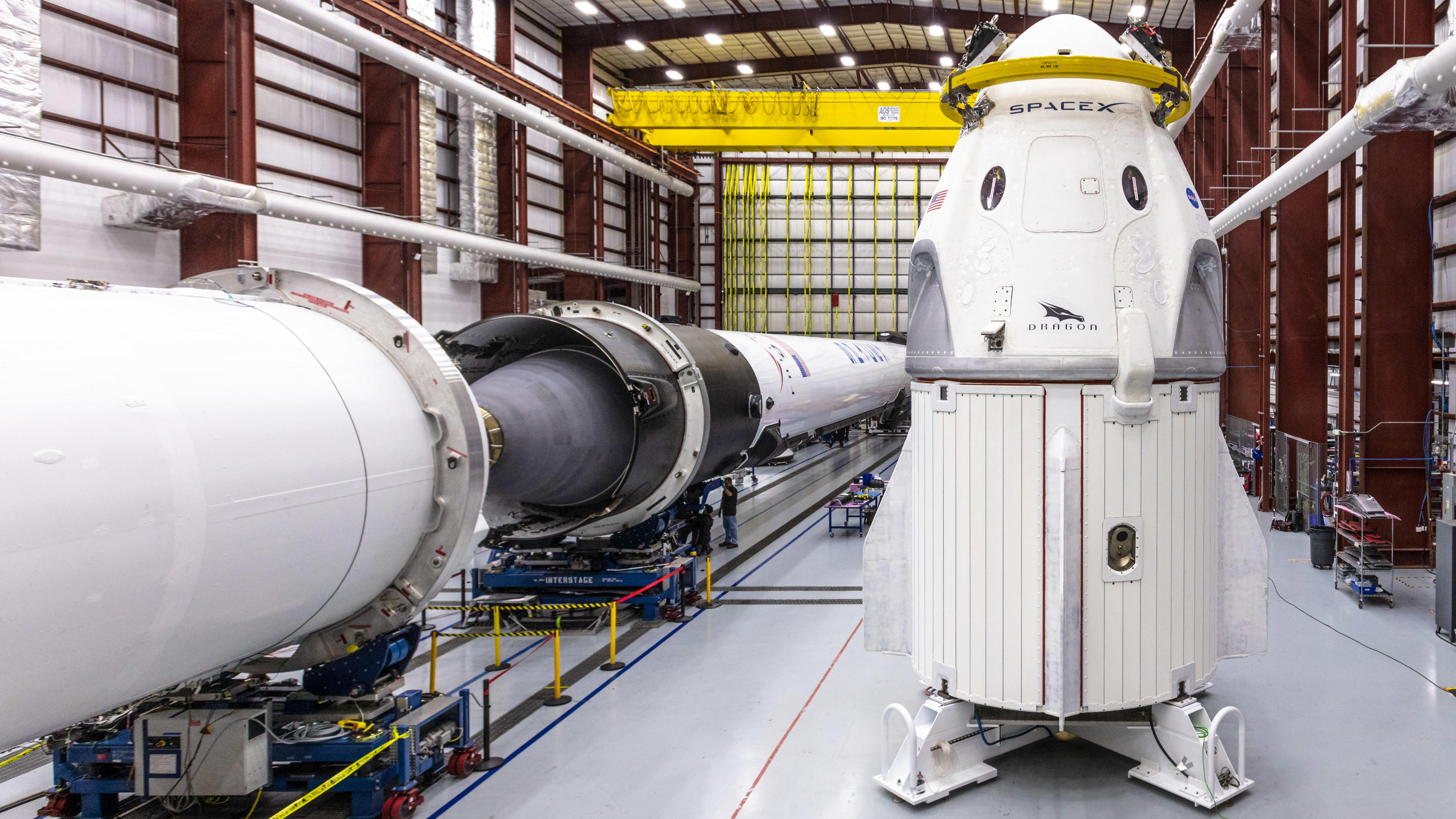Probleme mit der Centaur-Oberstufe führten in der Nacht zum Startabbruch von Starliner – ein neuer Starttermin ist noch nicht bekannt.#Starliner #Boeing #Falcon9 #SpaceX #BemannteRaumfahrt #NASA #InternationaleRaumstation #ISS #PrivateRaumflüge #CrewDragon #Astronomie
Raketenprobleme verhindern Starliner-Start
#falcon9
Am 7. Mai 2024 soll die Raumkapsel Starliner der Raumfahrtfirma Boeing erstmals mit den Astronauten Barry »Butch« Wilmore und Sunita »Suni« Williams an Bord zur ISS fliegen.#Starliner #Boeing #Falcon9 #SpaceX #BemannteRaumfahrt #NASA #InternationaleRaumstation #ISS #PrivateRaumflüge #CrewDragon #Astronomie
Butch und Suni testen erstmals den Starliner
2 Likes
Private Mondmission erfolgreich gestartet | DW | 11.12.2022
Reger Mondverkehr: Nur Stunden, bevor die "Artemis 1"-Mission der NASA zu Ende gehen soll, startet ein neues, internationales Konsortium zum Erdtrabanten. Ihr Ziel ist die kommerzielle Erschließung des Monds.#Raumfahrt #Mond #ispace #CapeCanaveral #Falcon9 #SpaceX #ArtemisI #HAKUTO-R
Private Mondmission erfolgreich gestartet | DW | 11.12.2022
2 Likes
2 Comments
3 Likes
Foguete descontrolado da SpaceX está em rota de colisão com a Lua -
https://br.sputniknews.com/20220126/foguete-descontrolado-da-spacex-esta-em-rota-de-colisao-com-a-lua-21167392.html -
RT Sputnik Brasil -
"...segundo estágio de um velho #Falcon9...vai se colidir com a Lua no dia 4 de março...
Os especialistas na verdade estão animados com a possibilidade de a espaçonave colidir com a Lua...o Falcon 9 vai gerar um tipo de perfuração, que PODE liberar o acesso a "substâncias nunca antes vistas no solo lunar..." -
Sobre a nova missão espacial #DART -
Separação de naves espaciais! #DARTmission 🛰 -
Obrigado pela ótima viagem #SpaceX #Falcon9 - 🚀 -
A equipe da espaçonave estará monitorando para Aquisição de Sinal
https://pic.twitter.com/6px23JnNuS -
RT NASA’s Launch Services Program -
1 Comments
NASA begins DART mission to practice pushing away an asteroid, with an extra push from Aerojet
 SpaceX’s Falcon 9 rocket fires up to launch NASA’s DART asteroid probe from Vandenberg Space Force Station in California. (NASA via YouTube).
SpaceX’s Falcon 9 rocket fires up to launch NASA’s DART asteroid probe from Vandenberg Space Force Station in California. (NASA via YouTube).
A space probe the size of a school bus is on its way to smash into an asteroid the size of Egypt’s Great Pyramid, directed by thruster systems built by Aerojet Rocketdyne in Redmond, Wash.
This is no “Armageddon,” and there’s no need for Bruce Willis to ride to the rescue. But the experiment is expected to help scientists figure out how to divert a dangerous asteroid heading for Earth should the need arise. That’s one giant leap for planetary defense — and for Aerojet Rocketdyne, whose made-in-Redmond thrusters have been used on dozens of space missions.
“We’ve been to every planet in the solar system,” said Joseph Cassady, Aerojet’s executive director for space. “But this is the first time we’ve ever done something that’s really truly planned as a defense against threats to life on Earth. The test we’re going to do here is really the first step in getting ourselves ready as a species to react and respond if we ever are threatened in that way.”
NASA’s Double Asteroid Redirection Test mission, or DART, got off to a showy start with tonight’s launch of a SpaceX Falcon 9 rocket from Vandenberg Space Force Base in California. Liftoff occurred at 10:21 p.m. PT, at the end of a smooth countdown.
Minutes after launch, the rocket’s second stage separated from the first-stage booster and proceeded to orbit, while the booster flew itself back to an at-sea landing on a drone ship stationed in the Pacific. Within an hour after launch, the second stage was due to deploy the DART spacecraft and send it on its way.
Tonight’s launch marked the first leg of a 10-month journey to a double-asteroid system that’ll be nearly 7 million miles away from Earth at the time of the encounter. The larger asteroid, called Didymos, is about half a mile wide — but that’s not DART’s target. Instead, Aerojet’s thrusters will guide the spacecraft to hit the smaller asteroid, known as Dimorphos.
Dimorphos, which is about 525 feet wide, orbits Didymos like our moon orbits Earth. In fact, the asteroid was nicknamed “Didymoon” before it was given its official name last year. Dimorphos makes a complete circuit in 11.9 hours, and if everything goes just right, researchers expect the kinetic effect of DART’s collision to shorten that orbital period by as much as several minutes.
There’s no chance that Dimorphos will break up, veer out of orbit or head in Earth’s direction — which is what typically happens in movies like “Armageddon” (starring Bruce Willis) or “Don’t Look Up” (premiering next month on Netflix).
“We picked it for the reason that it’s perfectly safe,” Cassady said. “Even if we miss, or we don’t accomplish the mission that we thought we would, there’s never going to be a danger to Earth. And if we hit it too hard, there still won’t be a danger to Earth.”
Mission controllers at Johns Hopkins University’s Applied Physics Laboratory have programmed the probe to control Aerojet’s onboard thruster systems autonomously, so that it hits Dimorphos cleanly at a velocity of about 15,000 mph.
A shoebox-sized, Italian-built piggyback probe — known as the Light Italian CubeSat for Imaging Asteroids, or LICIACube — will be deployed from the main spacecraft 10 days before the encounter and hang back to capture images of the smash-up from a safe distance. Meanwhile, DART will be sending back images of Dimorphos all the way up to the moment of impact.
Based on NASA’s experience with a comet-smashing mission in 2005 called Deep Impact, DART’s destruction should be a real blast. In fact, it could take years for the dust to settle. In order to get a clear picture of the collision’s aftermath, the European Space Agency is planning to launch a reconnaissance probe to the double-asteroid system in 2024.
Dimorphos is far smaller than the mega-asteroid that wiped out the dinosaurs 66 million years ago. But it’s far bigger than the 65-foot-wide asteroid that broke up spectacularly over Siberia in 2013 and turned a brighter spotlight on the potential threat from asteroids and comets. An asteroid the size of Dimorphos could wipe out a city if it hit in just the wrong place.
For that reason, scientists will closely analyze the findings from the DART mission and factoring them into their calculations for changing the path of a threatening asteroid — perhaps with a kinetic impactor like DART, or a “gravity tractor” that could make a subtler course correction, or a nuclear blast if time is short.
“It’s good to be prepared,” Cassady said.
Engineers at Aerojet Rocketdyne will closely analyze DART’s performance as well, and not just because of the planet protection angle. The $330 million mission also marks the first in-space use of the NEXT-C electric propulsion system, which was developed by Aerojet’s Redmond team in collaboration with NASA’s Glenn Research Center and Ohio-based ZIN Technologies.
NEXT-C, which features a super-efficient, low-thrust xenon ion engine, will supplement Aerojet’s more traditional, hydrazine-fueled MK-103G thruster system. “On DART, we’re getting a good test,” Cassady said.
Cassady said NEXT-C would be well-suited for deep-space missions aimed at bringing back pieces of a comet or an asteroid — perhaps in the next phase of NASA’s campaign to develop a planetary defense system.
“It’s a good fit because DART could use us,” he said. “It’s not as stressful of a mission as a comet sample return mission would be. But it’s a good proof that the engine can do the things we’ve said it will do in space, and we’ll wring everything out. It’s almost like our shakedown cruise, and then we’ll have it ready for that next mission.”
Check out these images of tonight’s launch:
time to redirect some asteroids!????
3 minute long exposure view of a
[
@spacex
](https://twitter.com/SpaceX?ref_src=twsrc%5Etfw)
falcon 9 launching the DART mission tonight for NASA????????
????for
[
@arstechnica
](https://twitter.com/arstechnica?ref_src=twsrc%5Etfw)
settings⚙️/downloads⬇️/prints???? of this photo:
[
[
pic.twitter.com/SzFGYPQX40
— Trevor Mahlmann (@TrevorMahlmann)
[
November 24, 2021
](https://twitter.com/TrevorMahlmann/status/1463397931134767106?ref_src=twsrc%5Etfw)
Liftoff! The
[
@spacex
](https://twitter.com/SpaceX?ref_src=twsrc%5Etfw)
Falcon9 rocket carrying
[
@NASA
](https://twitter.com/NASA?ref_src=twsrc%5Etfw)
DART spacecraft launches from Vandenberg Space Force base in California. I had this phenomenal view from my backyard in Santa Maria, CA.
[
](https://twitter.com/hashtag/Dartmission?src=hash&ref_src=twsrc%5Etfw)
[
](https://twitter.com/hashtag/Falcon9?src=hash&ref_src=twsrc%5Etfw)
[
@KSBY
](https://twitter.com/KSBY?ref_src=twsrc%5Etfw)
[
@KCOY
](https://twitter.com/KCOY?ref_src=twsrc%5Etfw)
[
pic.twitter.com/J946k49qVi
— Gerardo Nava (@NavaGerardo)
[
November 24, 2021
](https://twitter.com/NavaGerardo/status/1463396882160308227?ref_src=twsrc%5Etfw)
Spectacular
[
](https://twitter.com/hashtag/SpaceX?src=hash&ref_src=twsrc%5Etfw)
[
](https://twitter.com/hashtag/Falcon9?src=hash&ref_src=twsrc%5Etfw)
rocket ???? launch tonight visible in
[
](https://twitter.com/hashtag/BeverlyHills?src=hash&ref_src=twsrc%5Etfw)
[
@WaldorfBevHills
](https://twitter.com/WaldorfBevHills?ref_src=twsrc%5Etfw)
[
@TheRooftopbyJG
](https://twitter.com/TheRooftopbyJG?ref_src=twsrc%5Etfw)
[
@elonmusk
](https://twitter.com/elonmusk?ref_src=twsrc%5Etfw)
[
@SpaceX
](https://twitter.com/SpaceX?ref_src=twsrc%5Etfw)
[
](https://twitter.com/hashtag/MottekOnMoney?src=hash&ref_src=twsrc%5Etfw)
[
@KABCRadio
](https://twitter.com/KABCRadio?ref_src=twsrc%5Etfw)
[
pic.twitter.com/QiZkYQjUjB
— Frank Mottek (@frankmottek)
[
November 24, 2021
](https://twitter.com/frankmottek/status/1463396400129929218?ref_src=twsrc%5Etfw)
[
](https://twitter.com/hashtag/NASA?src=hash&ref_src=twsrc%5Etfw)
[
](https://twitter.com/hashtag/DARTMission?src=hash&ref_src=twsrc%5Etfw)
The launch was so bright that the camera changed to color mode for a few seconds,
[
@AlertWildfire
](https://twitter.com/AlertWildfire?ref_src=twsrc%5Etfw)
.
[
pic.twitter.com/nUPOvuAriP
— DanielFireCopter (@DanielFireTruck)
[
November 24, 2021
](https://twitter.com/DanielFireTruck/status/1463395087115689993?ref_src=twsrc%5Etfw)
Yay! I saw it!
[
](https://twitter.com/hashtag/NASA?src=hash&ref_src=twsrc%5Etfw)
[
](https://twitter.com/hashtag/DART?src=hash&ref_src=twsrc%5Etfw)
on
[
](https://twitter.com/hashtag/SpaceX?src=hash&ref_src=twsrc%5Etfw)
[
](https://twitter.com/hashtag/Falcon9?src=hash&ref_src=twsrc%5Etfw)
was visible from San Jose 200mi north. Best I got was of the 2nd stage speeding away after separation.
[
](https://twitter.com/hashtag/PlanetaryDefense?src=hash&ref_src=twsrc%5Etfw)
[
](https://twitter.com/hashtag/LowFlyingRocks?src=hash&ref_src=twsrc%5Etfw)
[
](https://twitter.com/hashtag/astronomy?src=hash&ref_src=twsrc%5Etfw)
[
pic.twitter.com/8mhxyt4e66
— Ian Kluft (@ikluft)
[
November 24, 2021
](https://twitter.com/ikluft/status/1463396150359199746?ref_src=twsrc%5Etfw)
posted by pod_feeder
time to redirect some asteroids!🚀
— Trevor Mahlmann (@TrevorMahlmann) November 24, 2021
3 minute long exposure view of a @spacex falcon 9 launching the DART mission tonight for NASA🇺🇸
📸for @arstechnica
settings⚙️/downloads⬇️/prints🖼 of this photo: https://t.co/MKXaTtSKPX pic.twitter.com/SzFGYPQX40
One person like that
Um foguete #Falcon9 em direção ao espaço passa na frente da #Lua. -
https://pic.twitter.com/cmu17TqDgN -
RT Wonder of Science - Crédito: Michael Seeley -
1 Comments
5 Likes
A vista quando #Falcon9 está decolando -
https://pic.twitter.com/4sJIU59o5B -
RT Domenico 🚀 🔴 - Crédito de #SpaceX -
One person like that
SpaceX launches 60 Starlink satellites in record 10th liftoff (and landing) of reused rocket | Space
https://www.space.com/spacex-starlink-27-10th-falcon-9-rocket-launch-landing-success
SpaceX launches 60 Starlink satellites in record 10th liftoff (and landing) of reused rocket
By Amy Thompson about 11 hours ago
SpaceX's reusable rockets have now hit double digits.
CAPE CANAVERAL, Fla. — A SpaceX Falcon 9 rocket launched 60 Starlink internet satellites into orbit early Sunday (May 9) and then stuck a landing at sea to cap a record 10th flight for the company's reusable booster.
The veteran Falcon 9 rocket blasted off before dawn from Space Launch Complex 40 here at Cape Canaveral Space Force Station at 2:42 a.m. EDT (0642 GMT), marking the company's 14th launch of the year. It was also one for the record books as the flight was this particular booster's 10th launch and landing attempt. The rocket's once pristine exterior was almost black, charred by its many trips to orbit and back.
"First time a Falcon rocket booster will reach double digits in flights," SpaceX CEO Elon Musk wrote on Twitter Saturday before launch.
A SpaceX Falcon 9 rocket carrying 6- Starlink internet satellites launches on a record 10th flight from Space Launch Complex 40 at Cape Canaveral Space Force Station in Florida on May 9, 2021.
A SpaceX Falcon 9 rocket carrying 60 Starlink internet satellites launches on a record 10th flight from Space Launch Complex 40 at Cape Canaveral Space Force Station in Florida on May 9, 2021. (Image credit: SpaceX)The successful liftoff marked the second time SpaceX launched one of its 229-foot-tall (70 meters) workhorse Falcon 9 rockets within the same week, each carrying a full stack of 60 flat-paneled Starlink broadband satellites.
"SpaceX's first reuse of an orbital class rocket was on the SES-10 mission way back in March of 2017," Spacex supply chain supervisor Michael Andrews said in a live webcast. "We've certainly come a long way since then."
Approximately nine minutes after liftoff, the rocket's first stage returned to Earth, touching down on SpaceX's drone ship "Just Read the Instructions" for a record 10th successful landing.
Onlookers were treated to quite the spectacle as the rocket lit up the pre-dawn sky as it climbed to orbit. Clear skies above Florida's Space Coast made for prime viewing conditions.
In photos: SpaceX launches, lands 1st reused Falcon 9 rocket
In 2020, SpaceX launched a record 26 rockets, and the company is showing no signs of slowing down. So far this year, the Hawthorne, California-based rocket builder has launched 14 missions. Every one of those launches has been on reused rockets, and most have carried SpaceX's own Starlink satellites.
Last month, SpaceX celebrated the launch of its third astronaut mission in less than a year as the private spaceflight company delivered a crew of four astronauts to the International Space Station. That mission, called Crew-2, was SpaceX's first crewed mission to fly on a reused rocket.
Of its 14 missions this year, 11 have carried Starlink satellites into orbit. SpaceX has already filled its initial internet constellation of 1,440 broadband satellites. However, the company has approval to launch thousands more and is relying on its fleet of flight-proven boosters to help it do so.
SpaceX's 1st 'Block 5' Falcon 9 rocket: The launch photos
- Reusable rocket milestoneA SpaceX Falcon 9 rocket carrying 60 Starlink internet satellites launches on a record 10th flight from Space Launch Complex 40 at Cape Canaveral Space Force Station in Florida on May 9, 2021.
SpaceX's veteran Falcon 9 rocket first stage booster is seen after making a record 10th landing on the drone ship Of Course I Still Love You following the Starlink 26 mission launch on May 9, 2021. (Image credit: SpaceX)The booster used in Sunday's launch, called B1051, is one of SpaceX's fleet leaders. The veteran flier now has 10 launches and landings under its belt as the company has plans to push its Falcon 9 rockets to the limit. It's the first booster in SpaceX's fleet to reach this milestone. (Another booster, B1049, just launched on its ninth mission earlier in the week.)
This Falcon 9 made its debut in 2019, launching an uncrewed Crew Dragon capsule on the Demo-1 mission as part of a test flight for NASA's Commercial Crew program. The booster also launched a trio of Earth-observing satellites for Canada, a broadband satellite for Sirius-XM and seven different Starlink missions.
SpaceX has been using its previously flown boosters with the most miles to transport its own satellites into space. That way the company can push its fleet of Falcons to the limit while also learning as much about the wear and tear each vehicle receives during launch.
This is the 118th overall flight for Falcon 9, and the 64th flight of a refurbished booster. In fact, every single SpaceX launch so far in 2021 has been on a flight-proven rocket.
In 2018, SpaceX debuted the rocket we see today, a version of Falcon 9 known as Block 5. This more capable Falcon 9 has ushered in an era of rapid reusability for the company, enabling SpaceX to launch more rockets than ever before.
Three years ago, SpaceX CEO and founder Elon Musk told reporters that the company expected each Falcon 9 to fly 10 times with few refurbishments in between flights, and as many as 100 times before retirement.
B1051 is the first to make it to the historic 10-flight milestone, and is expected to fly again, following its successful landing at sea. According to Musk, there doesn't appear to be a hard limit on the number of times a booster can be reused, so the company will continue pushing each Falcon to its limit.
Having a fleet of flight-proven rockets at its disposal allows SpaceX to keep up with its rapid launch cadence. However, SpaceX chooses to fly its own payload on boosters with a high flight count, saving its newer boosters for paying customers.
Both NASA and the U.S. Space Force recently granted the company approval to fly their payloads on reused rockets, and we saw the first of those missions blast off on April 23, with the launch of Crew-2. (SpaceX has flown other NASA missions on reused boosters, but April's flight marked the first time a human mission has done so.)
To facilitate reuse, SpaceX outfitted its Falcon 9 with some upgrades previous versions did not have, including a more robust thermal protections system, a more durable interstage (the part that connects the rocket's first stage to the upper stage), titanium grid fins, and more powerful engines. These key enhancements, along with two drone ships on the same coast, have enabled SpaceX to launch and land more rockets.
Starlink constellation grows
Click here for more Space.com videos...SpaceX created its massive internet constellation with one major goal: to provide internet coverage to the world, in particular to those in remote and rural areas. To that end, company engineers designed a fleet of flat-paneled broadband satellites to fly over the Earth, beaming down internet coverage to users who can access the service via a compact user terminal.
With Sunday's launch success, SpaceX has launched more than 1,600 Starlink satellites into orbit, including some that are no longer operational. This goes beyond the company's initial quota, which means we should see an official commercial rollout of the Starlink internet service sometime this year.
The company has already proven useful to those in remote areas. SpaceX has connected school districts in Virginia and North Carolina that would otherwise struggle with online learning, as well as the Hoh tribe in Washington State and the Pikangikum nation in Western Ontario.
Starlink review (hands-on): How good is Elon Musk's satellite internet service?
Currently, Starlink is still in its beta-testing phase with users around the world putting the service through its paces. The company has also opened up its website to begin taking preorders, although service won't begin right away. Prospective users can go to the company's website and reserve the service with a $99 deposit right now.
According to company officials, more than 500,000 users have signed up for the burgeoning service so far.
- Rocket fairing recoveryBoth of the fairing halves featured in Tuesday's mission will be recovered by the newest member of SpaceX's recovery fleet, Shelia Bordelon. The company officially bid farewell to its dynamic duo — GO Ms. Tree and GO Ms. Chief — last month. The twin fairing catchers helped SpaceX pioneer its fairing recovery efforts.
The rocket's nose cone (also called a fairing), is a piece of clamshell-like hardware that protects the payload as the rocket races through the atmosphere. Once it reaches a certain altitude, the pieces jettison, and fall back to Earth.
Historically, the hardware was discarded in the ocean, never to be used again. However, thanks to onboard parachutes and navigation software, SpaceX began to recover the fairings, either by catching them in a net-equipped boat or scooping them out of the water.
With the help of its onboard crane, the brightly painted Shelia Bordelon will retrieve the fairings from the water and return them to port. From there, they will be refurbished and prepared for their next mission.
